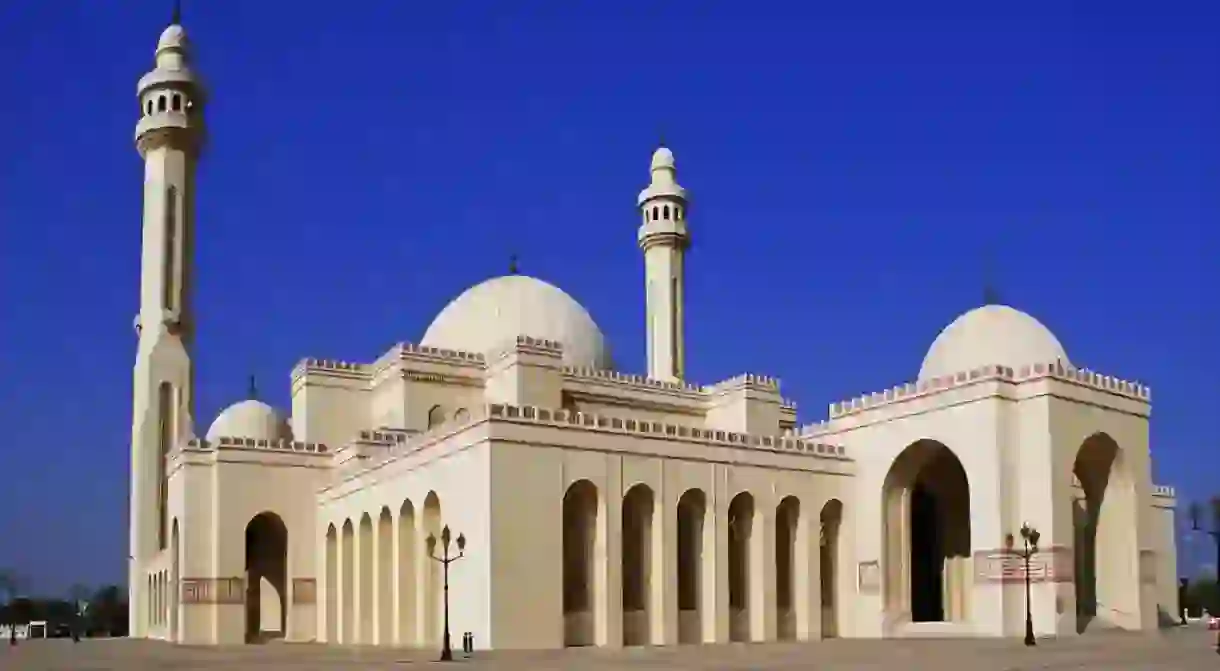How to Celebrate Eid al-Fitr in Bahrain

Marking the end of the holy month of Ramadan, the fast-breaking holiday of Eid al-Fitr is celebrated by Muslims across the globe. Eid is an exciting time to be in Bahrain, as centuries-old traditions meet modern festivities for three days. Here’s how locals celebrate the occasion.
Praying at Al Fateh Grand Mosque
Eid festivities often begin with prayer. While women usually pray at home, men visit the nearest mosque, with thousands of Bahrainis gathering at the Al Fateh, in Manama. Sprawling across 6500 square metres, the Grand Mosque can accommodate 7000 worshippers all at once and is crowned with the largest fibreglass dome in the world. Its walls are beautifully ornamented with Kufic calligraphy, making it a picturesque place to ring in the holiday.

Paying it forward
As one of the pillars of Islam, zakat – meaning alms-giving — is an important part of Ramadan, with many Muslims using this time to help others through charity and volunteering. Although this practice is common throughout the holy month, Bahrainis also take Eid as an opportunity to do good, usually by donating to organised homes to ensure that those in need are able take part in the Eid celebrations.

Family get-togethers over an Eid feast
Traditionally, Bahraini families gathered at Al Bait Al Oud (the family house) to celebrate Eid with their loved ones. Though nowadays a family may be spilt into numerous homes or even spread across the globe, Bahrainis still come together with their families over the holidays, often exchanging gifts or financial donations known as eidiya. The holiday is then celebrated over a festive meal: ghoozi, a rice dish with lamb, eggs, and spices or machboos, another rice dish cooked with meat or fish, are usually prepared.
Traditional sweets
No festival across the world is complete without sweet treats. Bahrainis love their halwa (a sweet gelatinous confection covered with roasted cashews and almonds), khanfroosh (a deep-fried sweet made with white flour, sugar, eggs, cardamom, and saffron), rehash (a sweet made with sesame paste) and more. Most of these sweets, or modern variations of them, are served at Arabic cafes. If you want to buy some for yourself, the 150-year old Halwa Showaiter in Muharraq has a great selection on offer.
Wearing festive attire
Most people buy new clothes to wear on Eid – often one for each of the three days of holiday. It’s tradition to put on festive clothing, a symbol of fresh beginnings and of leaving the old self behind. Today, locals wear both modern clothing and traditional attire, with many Bahraini men donning a thawb (long tunic), twith, a headdress such as the keffiyeh, ghutra, or agal, and women usually wearing an abaya (long, loosely fitted black gown) with a hijab (scarf) to cover their head. Ladies also adorn their hands and feet with henna tattoos as part of the Eid traditions.

Outings and entertainment
Today, many will celebrate Eid outside of the family home, going out together for a movie or for some indoor games at the arcade in a mall. There are many malls in Bahrain, The Avenues being the largest (40,000 square metres with an additional 30,000 square metres underway as phase two of the project). If it’s not too hot, people head to one of the many parks, usually around sunset.













